I had the opportunity to visit the endangered Mountain Gorillas in Rwanda this summer, and I’d like to share my experience with you. Yes, this post is a departure from my normal wildflower hike topic, but I hope you will find it interesting.
The Mountain Gorilla, Gorilla beringei ssp. beringei, is listed as an endangered species by IUCN’s Red List. Estimates are that there are only around 1000 individuals remaining, all in two regions, the Bwindi Impenetrable National Park in Uganda and the Virungas mountain region of Rwanda, Uganda and Democratic Republic of Congo. The primary threats to them are habitat loss and hunting for meat.
Tourists are given the opportunity to visit the Mountain Gorillas in Rwanda and Uganda under very regulated circumstances. Permits are required, and they are very limited. You have to plan as much as a year in advance. The current cost for a permit is $1500.00 US. There are various family groups in both regions that have been habituated to contact with people, and you’ll have to hike some distance into the jungle to reach them. Once they are located, you are limited to one hour with them. In all cases you will be accompanied by several guides, porters, and park rangers.
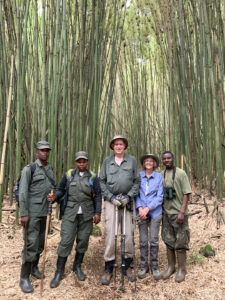
I should note that it is very likely that tourism of this sort is a major reason why these animals continue to survive, and in fact their population is growing (albeit slowly). Tourism brings in millions of dollars to the communities, and provides employment for many people locally. This gives them a reason to protect the gorillas and their habitat, instead of destroying the forest for additional farmland and hunting the animals for food.
We chose Rwanda as our destination for a gorilla trek. My understanding is that the operations on the Rwanda side are a bit more organized, and in general you have a shorter hike to find a group. The Rwanda gorilla families are found in the Volcanoes National Park, an island of green surrounded by cultivated fields. At the park headquarters, tourists are divided into groups that range from two to ten people, and each group travels to a different location where they hike in to see the particular family group that they have been assigned to. In our case we saw the Susa family group, one of the families that was originally studied by Dian Fossey.

I’m told that the trek to see some of the families are harder than others. Since I’ve been on just on tour, I don’t know how our trek compared to others as far as difficulty. Initially I didn’t think our hike would be that tough, it was only around 4 miles (possibly less) round trip. However, this hike starts off at 8900′ and we climbed fairly rapidly up to 10,100′ in just about a mile and a half on a narrow jungle trail. It was exhausting! Our travel agent had strongly recommended that we hire a porter for each of us – I was skeptical, since my wife and I hike regularly at elevation in the Sierra’s. However, hiring a porter was one of the smartest things we did, as they “guided” us expertly (that is, carried my camera equipment, pulled us up the steep parts, and generally watched out for our well-being).
At the top of the trail we took a breather and waited for the rangers/trackers to let us know where the mountain gorilla family was resting for the day. Fortunately, the family of about 25 gorillas was resting just a few hundred yards down a slope from us. They were in a large patch of stinging nettles, which is a favored food for them. We had been forewarned, so we had long sleeves and pants, gaiters around our ankles, and gloves. This saved us from a lot of discomfort, as we spent quite a bit of time moving through those nettles!
You aren’t supposed to approach the gorillas too closely, and initially they were resting in the shade where it was a bit difficult to get good photos. But after awhile they got used to us, and they started moving about to feed on the nettles and other plants in the area. While you can’t approach them, they certainly can choose to approach you! One big silverback walked right by me, practically stepping on my feet, too close for my telephoto lens to focus. In general, however, other than a few glances by the younger ones, they pretty much ignored us. After an hour, it was time to leave the family group and head back down the mountain.
This was one of the most amazing experiences of my life!
If you click on lightbox image below you will be able to scroll through larger versions of the pictures. All photos are available for purchase in a variety of formats. Please note that some of these photos were taken by me, some by my wife.
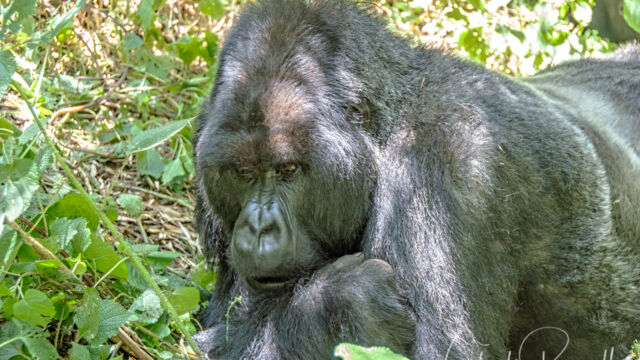

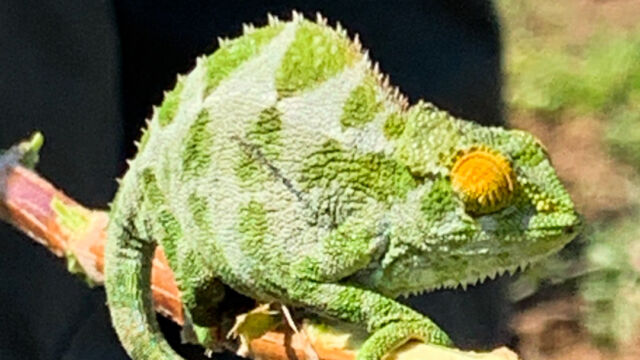
Traveling in Africa
If you plan on visiting Rwanda to see the mountain gorillas you need to do some advance planning. You’ll need a permit to visit them, and you have to get that far in advance. Also, traveling to Rwanda, and through the countryside to the Volcanoes National Park area, isn’t always straight forward. You really should work with a travel agency that has a lot of experience with this part of Africa.
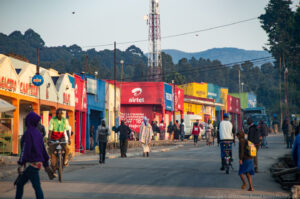
For our trip we used Custom Safaris, an agency that we’ve used before when traveling to east Africa. I highly recommend this company, the service they provide is outstanding. Not just in the planning stages, but throughout the entire trip. They’ll work with you to ensure that you get to see what you really want, they’ll prepare you for all of the issues you may have to deal with, they’ll just about hold your hand throughout the entire visit. For the Rwanda portion of our trip (we continued on to Kenya), we had a personal guide who met us at the airport, transported us to our hotel in Kigali and gave us a tour of the city, took us to our next lodging in Ruhengiri, got us to each of our tours, and brought us back to the airport again. He was very patient with all of the questions we had about Rwanda and the people that we saw along the way.
We had visited Africa five years ago on a trip arranged by Custom Safaris. At that time we thought that this would be our “once in a lifetime” trip, but we had such a great experience that we just had to go on another trip arranged by this company. On this trip we started in Rwanda and then continued to several camps in Kenya (which I’ll be talking about in another article). Every hotel and camp that we stayed at has been vetted by Linda Friedman, the owner of the company, and they also have an excellent staff based in Nairobi that can provide help along the way. We had a personal guide at every stop, and Custom Safaris even hands you a local cell phone that has the numbers of each of your guides (along with an office number that is always available). The level of service they provide is amazing.
Lodging
For this trip we stayed at the Five Volcanoes Hotel in Ruhengiri (aka Musanze), which is a short distance from Volcanoes National Park. This was an excellent place to stay, with a very friendly staff, and excellent meals. They really cater to folks hiking to see the gorillas! They packed us a “snack” to take along (several kinds of fruit, crackers, cookies, and a juice box). They have gaiters to loan you (which I highly recommend that you use), and when you return they’ll take your boots and clean them. On our last day there we returned from one of our treks after checkout time, but they let us use our room to shower and change before we left. Very accommodating!
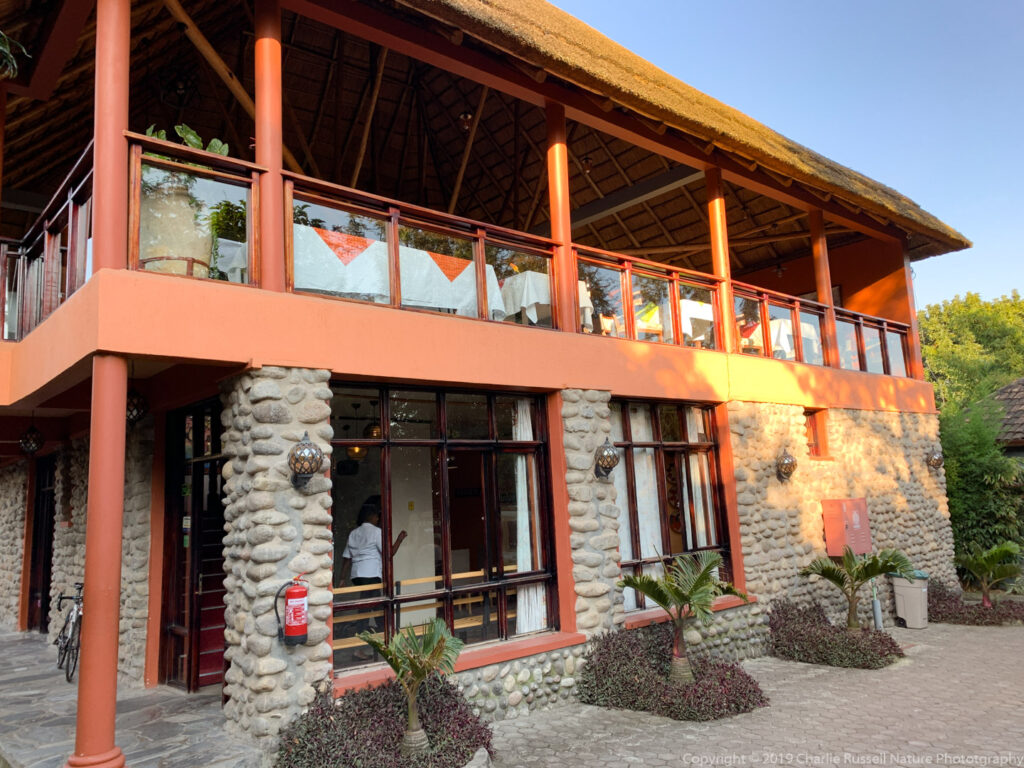
Life in Rwanda
This was our first visit to Rwanda, and it was very interesting to compare this with Kenya, which we are more familiar with. The capital city, Kigali, was interesting but crowded. There are many modern buildings in the city center. We visited the Kigali Genocide Memorial, which was an incredibly moving experience. We didn’t think we would be interested, but Custom Safaris recommended a visit, and we are glad that we did. This memorial goes beyond just the heart-rending facts about the events of 1994 to talk about the terrors of genocide throughout the history of the world. I highly recommend a visit if you go through Kigali.
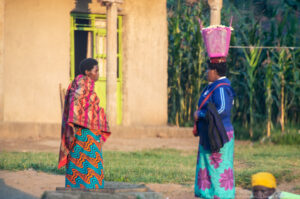
Out in the country away from the big city, everything was so clean! No litter along the roads, no piles of trash. We often saw people sweeping the gutters with twig brooms, even along the highways out in the mountains. This was a noticeable contrast from Kenya. Also, there is very little mechanization once you get away from the larger cities and towns. Few people have cars or even motorbikes. Large loads would be stacked on bicycles, and you wouldn’t believe the size of the loads that some women were carrying balanced on their heads.
Away from the cities, this is primarily an agrarian society, and much of the work is done by hand. Tremendous amounts of the countryside has been converted to agriculture with small family farms. In the area near Volcanoes National Park, most of the farms are raising Irish potatoes. All work is done by hand, and getting your potatoes to the collection center in town usually meant balancing huge loads on your bicycle.



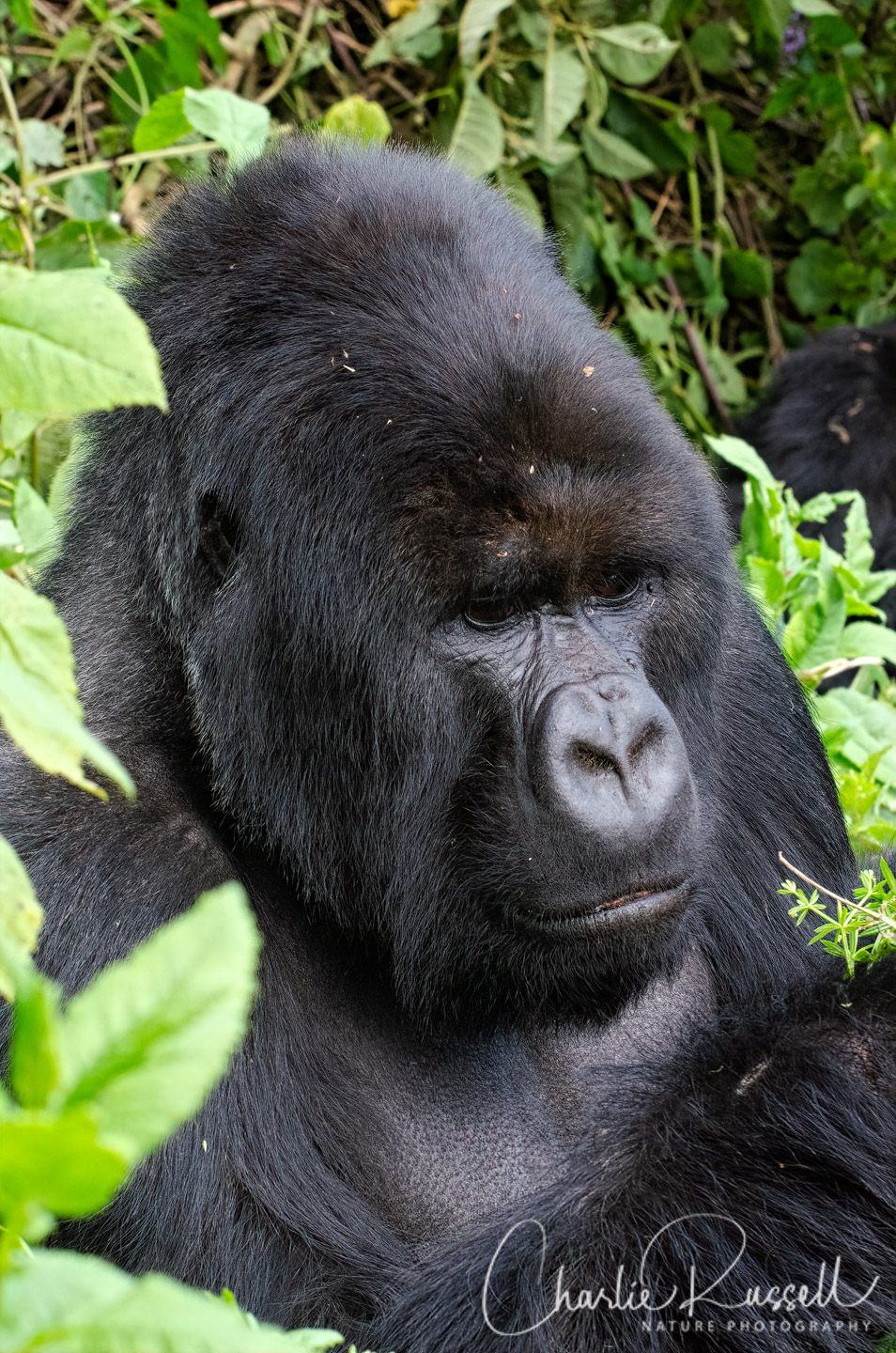
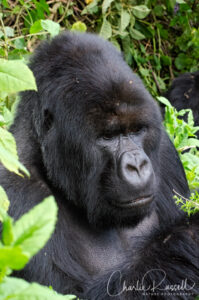

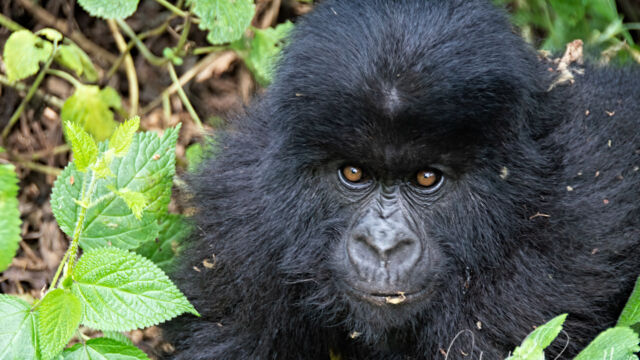

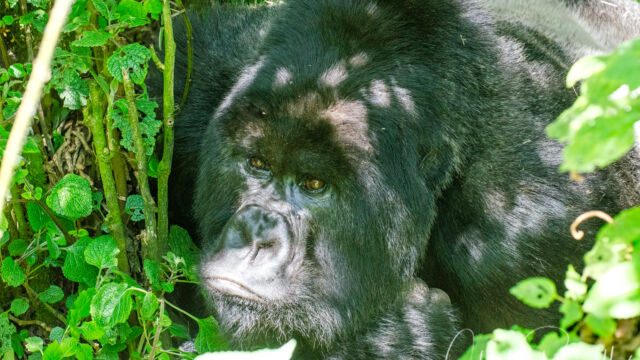

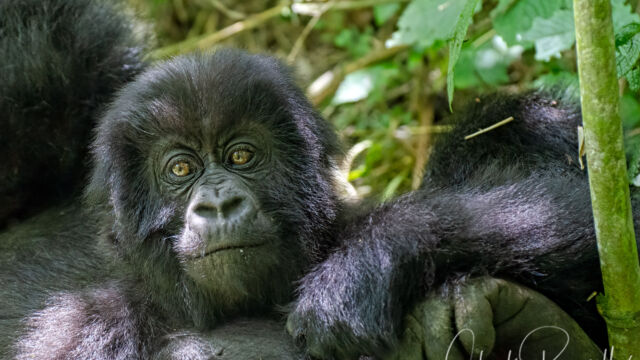
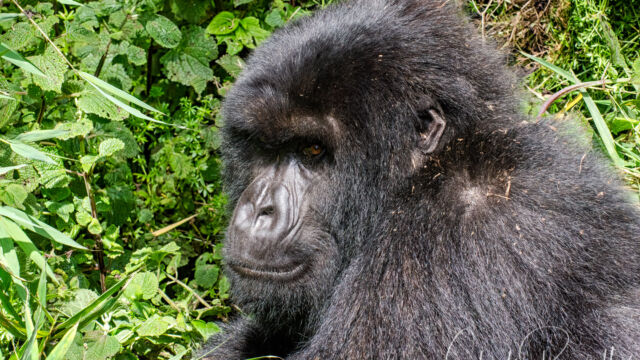
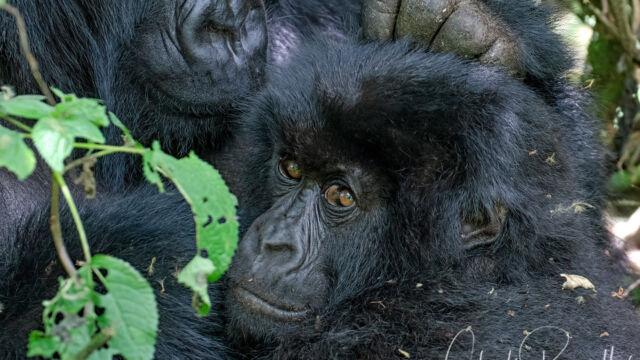

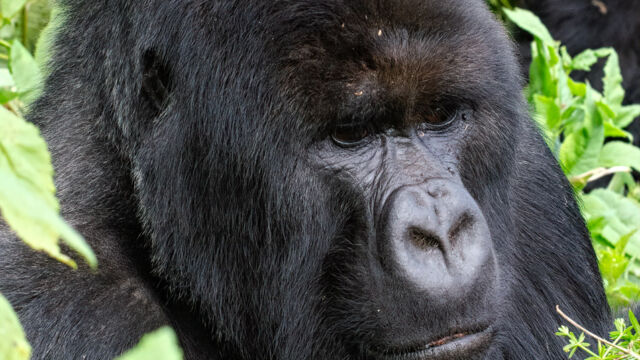

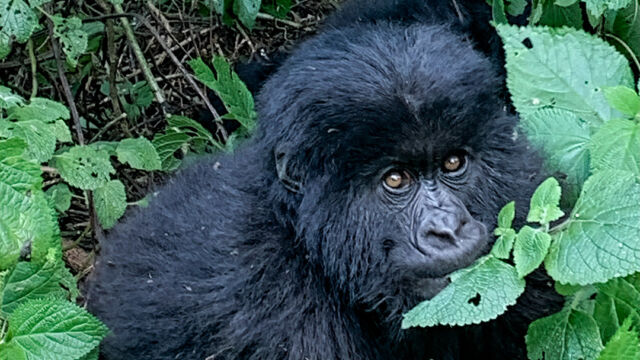
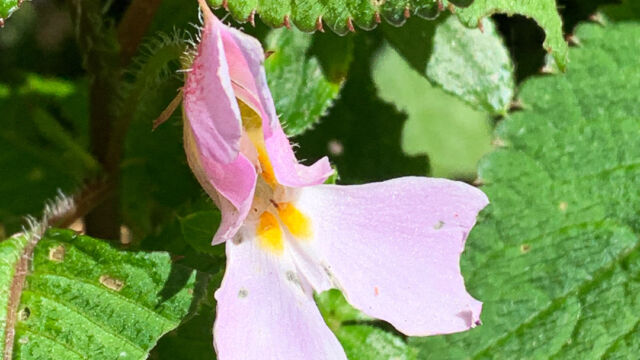
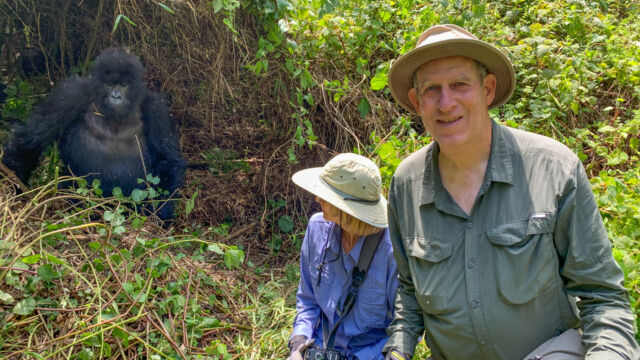
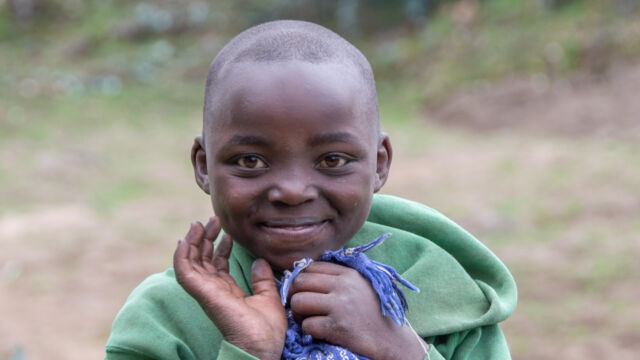
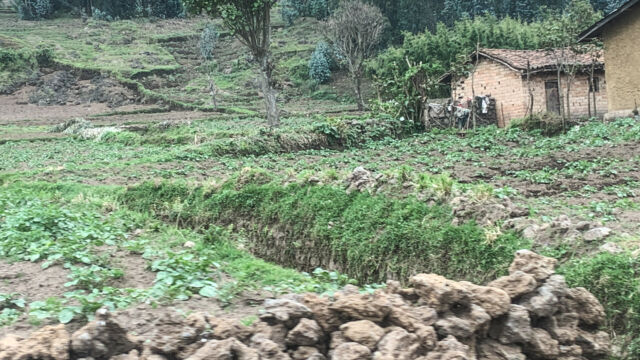
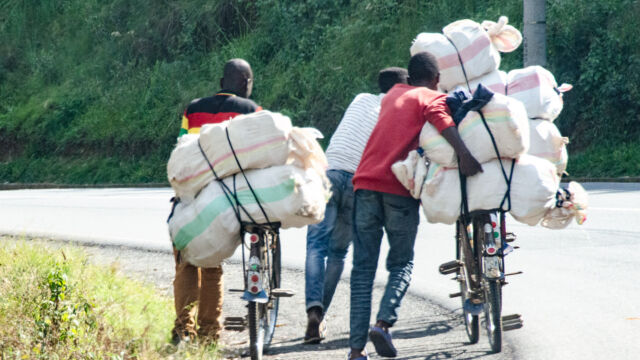
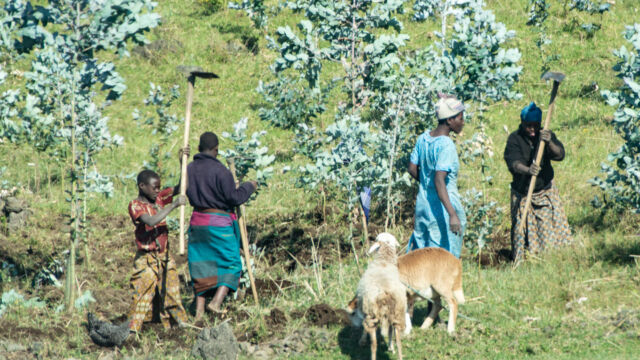
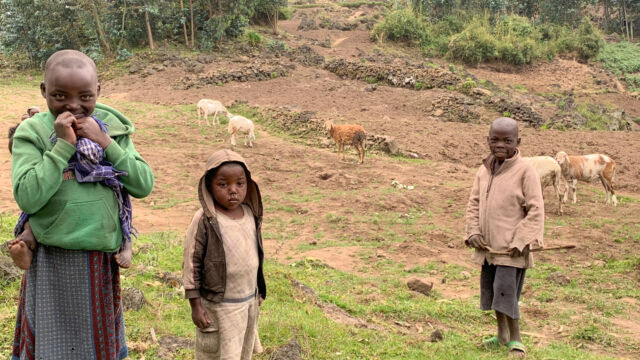
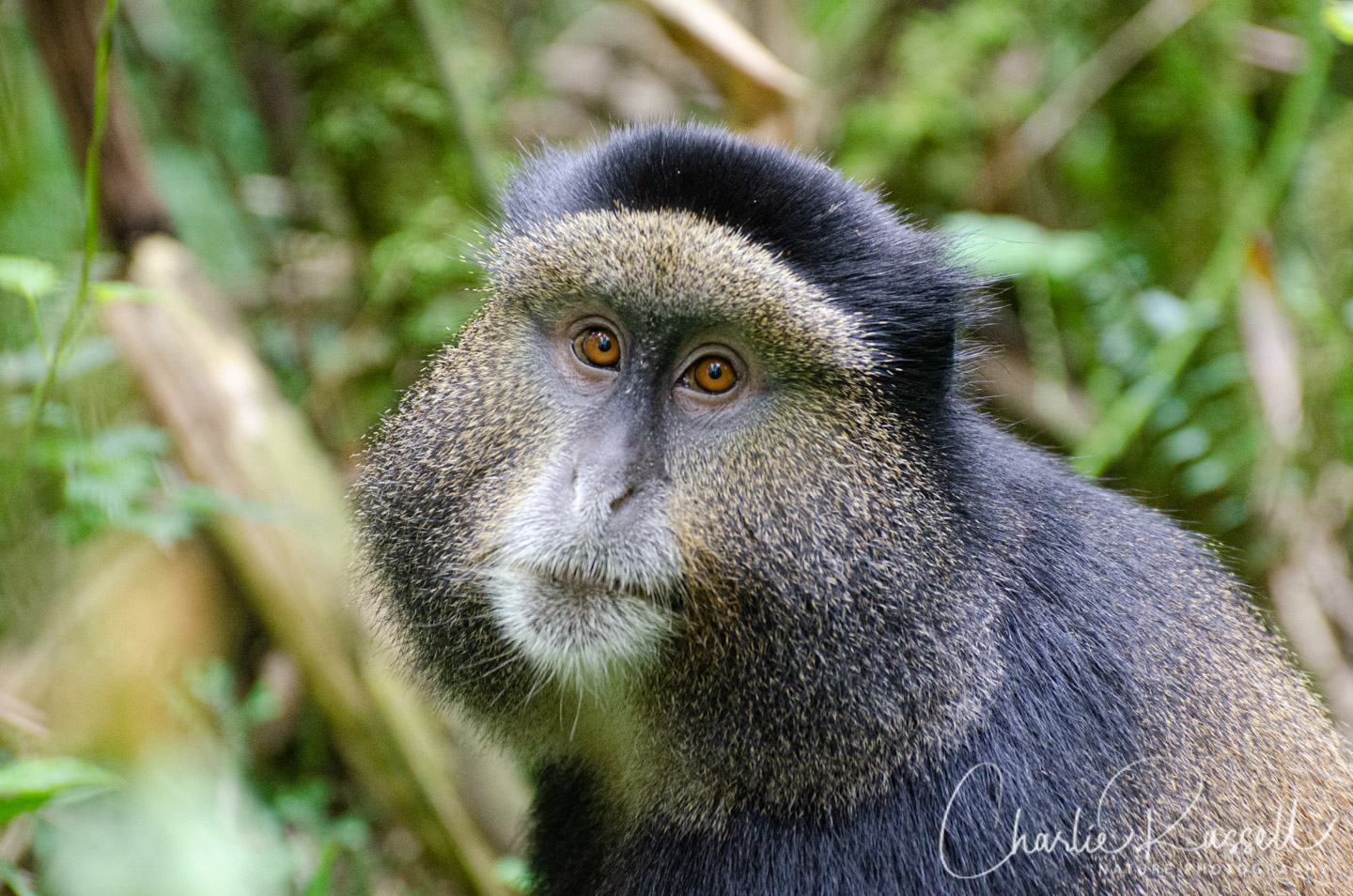
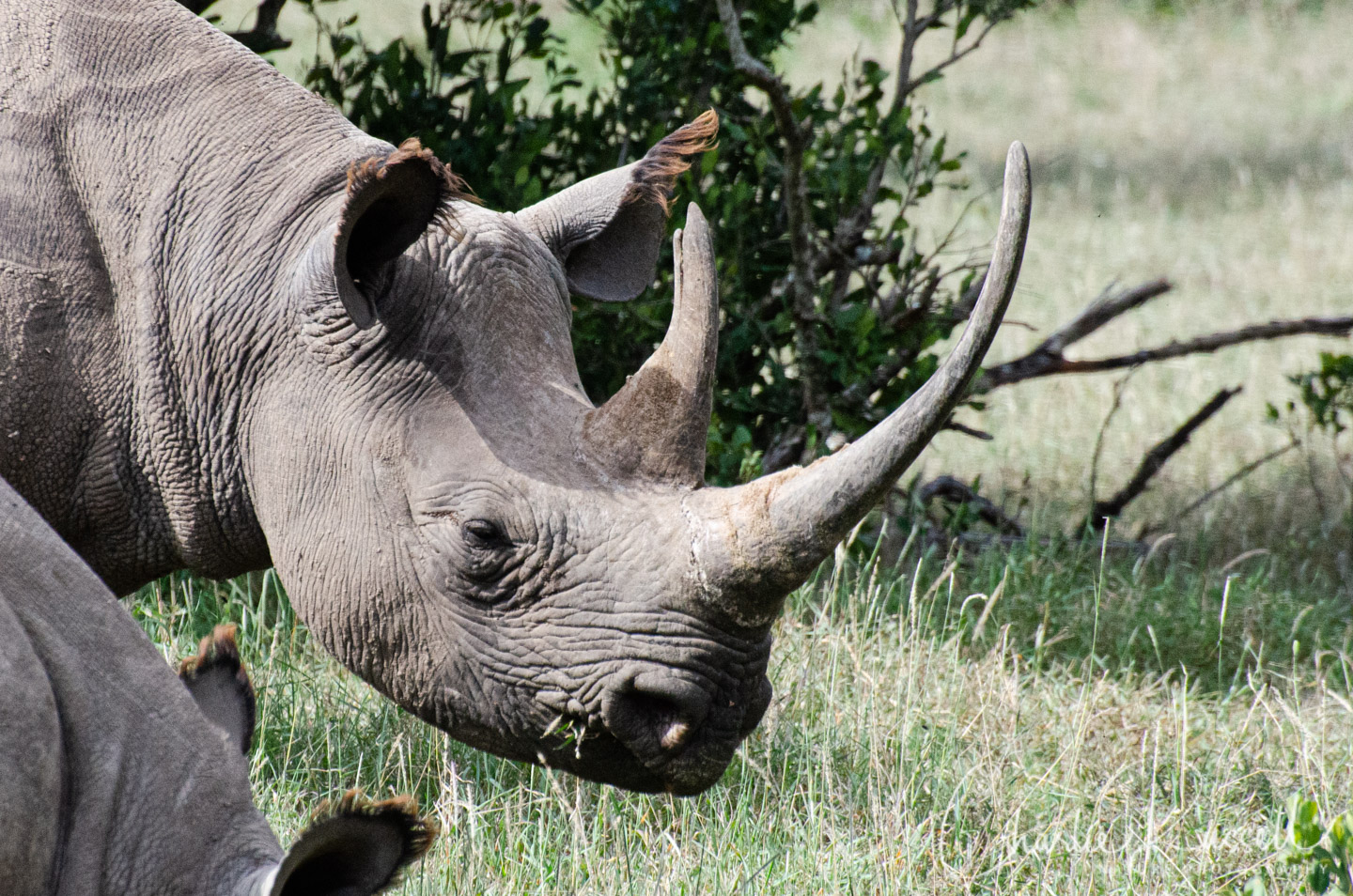
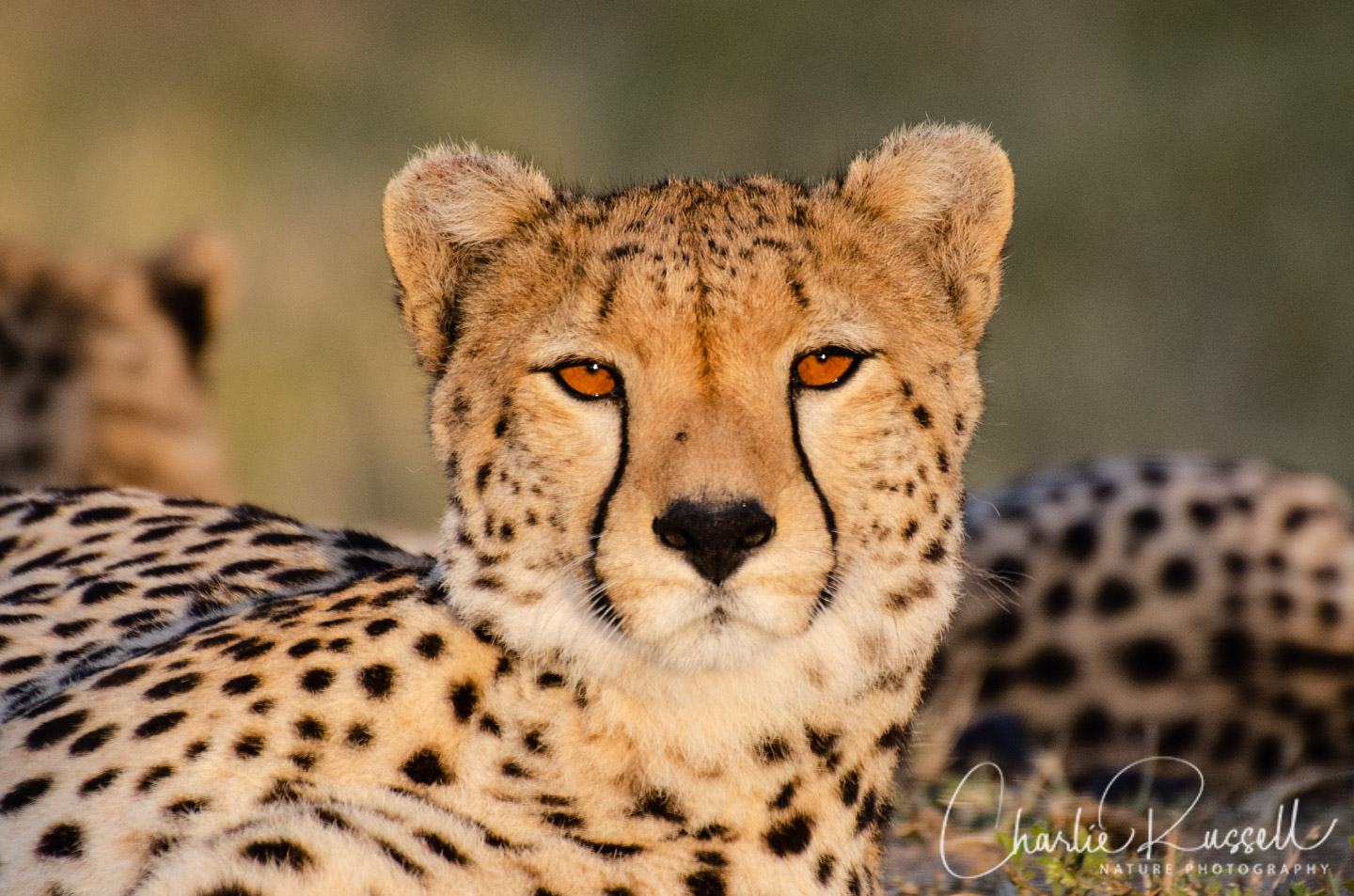
What an amazing trip! Your description of the gorillas and the culture of the Rwandan people made the hairs on my arms stand and brought tears to my eyes! What an emotional journey! Thanks for sharing and “taking me with you” on this trip through your blog! Love it.